In August 1939, the German replenishment ship Altmark sailed for Texas, to take on a load of fuel. On the way back across the Atlantic, she was told that war was imminent, and ordered to the South Atlantic to support Admiral Graf Spee's attack on Allied commerce there. The two ships met on September 1st, and Altmark received a pair of 20mm AA guns and a naval detachment to handle the guns and radios. Prize rules required Graf Spee to take aboard the crews of any ships she sank, and while the officers were retained aboard the cruiser, the common seamen were transferred to Altmark when the two ships met up to replenish. This hadn't been planned for, and conditions aboard the oiler were spartan.

Altmark
Graf Spee’s patrol came to an abrupt end in mid-December, when she was intercepted by a trio of British cruisers and damaged to the point that her captain decided to scuttle her. The released officers revealed the existence of Altmark, now carrying 299 captured sailors, and the hunt was on. Heinrich Dau, Altmark’s captain, remained in the South Atlantic for another few weeks, but eventually supplies began to run low, and he turned for home. Disguised as first a Norwegian and then an American tanker, Altmark eluded the British, passing south of Iceland and entering the coastal waters of neutral Norway on February 14th, 1940. The plan was to take advantage of "innocent passage" and stay in Norwegian waters for the next few days, with a night dash across the Skaggerak to reach Danish waters and safety.
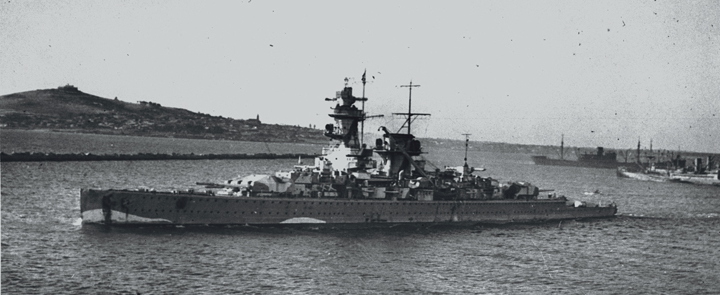
Admiral Graf Spee
The Norwegians quickly noticed and sent a torpedo boat from Trondheim to inspect the ship. Dau did not attempt to hide his ship's identity, simply stating that she was a state-owned tanker that was on passage from Texas to Germany with a cargo of fuel oil, and as such, did not have to submit to the inspections normally required of merchant ships. This caused confusion, as Norwegian neutrality regulations only recognized warships, which didn't have to submit to inspection, and merchant ships, which did.1 The British prisoners attempted to get the attention of the inspection party, but the Germans simply activated the steam winches on deck, a common precaution to keep them from freezing up, and none of the boarding party heard anything. The Norwegians simply noted that it had taken an awfully long time to get there from Texas and left, agreeing to let Altmark proceed. But as she headed south, a British ship passed going the other way, and her captain reported the Altmark’s presence to the Admiralty.
Higher-ups in the Royal Norwegian Navy were also aware of Altmark’s true nature, and swiftly gave orders that she be treated as a warship and escorted at all times while in Norwegian waters. To Captain Dau's frustration, Altmark was inspected twice more on the 15th, both times with lots of questions about her armament, now safely stowed away as required by Norwegian regulations, and about non-Germans onboard, which Dau denied. During the third inspection, the prisoners managed to make enough noise that the Norwegians noticed, although transporting prisoners through a neutral power's territorial waters wasn't illegal, and the Norwegians declined to take action without orders from their government. They did, however, order that the ship not enter the exclusion zone around Bergen. She would have to pass through international waters further from the coast, where the British might be waiting to pounce. Dau protested this decision to the German embassy in Oslo, while the Norwegian authorities decided to let Altmark pass through the exclusion zone in the hopes of getting her out of their hair.
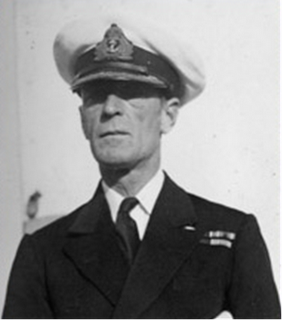
Philip Vian
In London, Churchill, serving as First Lord of the Admiralty, ordered destroyer sweeps up the Norwegian coast in hopes of intercepting the Altmark and freeing the prisoners held aboard her. The best-placed group was the 4th Destroyer Flotilla under Captain Philip Vian, composed of Cossack, Sikh, Nubian, Ivanhoe and Intrepid, with cruiser Arethusa attached. Vian split his force, with the Tribals in one group and the two I class ships accompanying Arethusa. When Altmark was sighted by a Hudson patrol plane around noon on the 16th, the second group was close by, and they steamed to intercept.
A few hours later, the British squadron found the German tanker, accompanied by the Norwegian torpedo boat Skarv. Arethusa ordered Altmark to proceed to international waters, a directive Dau ignored. He couldn't believe the British would violate Norwegian territorial waters in broad daylight with a warship right there, but he was proved wrong when Intrepid and Ivanhoe came in to intercept. Skarv's captain protested their presence, but the British outmaneuvered him, and Altmark slowed after Intrepid fired a trio of warning shots at her. When the British ship stopped to lower a boat with a boarding party onboard, Dau took the chance to run. Ivanhoe then attempted to come alongside, giving her boarding party a chance to jump from one ship to another, but Dau took advantage of the Norwegian pilots to steer near some islands, and those same pilots led the British to abandon plans to machine-gun the German vessel's bridge if she refused to stop. Instead, Altmark was able to seek sanctuary in Jossingfjord, where she penetrated several hundred yards into the thin ice covering most of the fjord. The British, distracted by the appearance of a second Norwegian torpedo boat, the Kjell, let her go.
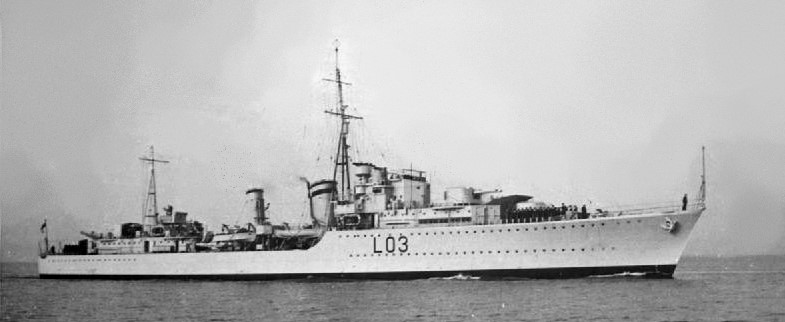
HMS Cossack
All three sides settled in for a standoff as the two torpedo boats blocked the entrance to Jossingfjord. The Germans and Norwegians both protested the British infringement to both the British warships and in Oslo, and the British backed off on promises of Altmark being searched for prisoners again. This was countermanded by the Norwegian high command, who also told the local commander not to use force to resist the British if they made a move. In an attempt to thwart a breakout, the British submarine Seal laid a net nearby, which snagged a German ore-carrier. Ivanhoe and Intrepid went to investigate, but the crew chose to scuttle their ship in the finest traditions of the German navy. In the meantime, Churchill gave orders to Vian, instructing him that unless the Norwegians agreed to take Altmark into custody and send her to Bergen, he was to take direct action to free the prisoners, although he wasn't to use force against the Norwegians unless necessary.
Vian chose to take Cossack in alone, and the watching Norwegians marveled at his recklessness in skirting foul waters. In fact, the navigator had made a mistake, and asked that the destroyer's lights be switched on so they could see where they were. Thanks to this, they were able to get through safely, and the Norwegians quickly hailed them, and requested that they withdraw. Vian informed them of his plans, and slipped between the two torpedo boats. Dau, uncertain of the intruder's identity, had taken Altmark deeper into the fjord, and when Cossack signaled that he should stand by to be boarded, he ordered full reverse. The secret papers were thrown overboard, but Dau, concerned about the prisoners, didn't trigger the scuttling charges.
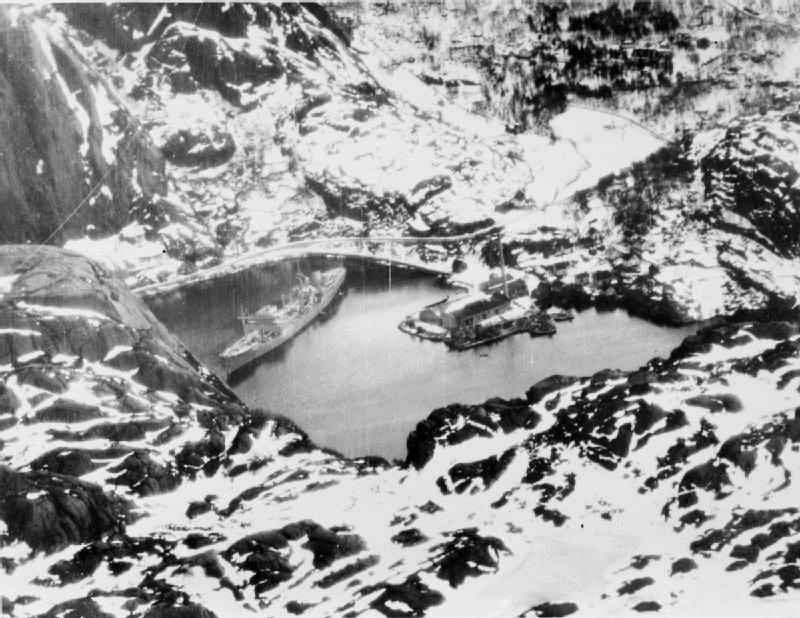
Altmark in Jossingfjord
Cossack turned to try and come alongside Altmark, but Vian miscalculated, and Altmark’s stern hit alongside the destroyer's bridge, scraping down her port side and pushing her towards the edge of the fjord. Only the ice sheet and some expert maneuvering kept her off the rocks, and the two ships were soon side-by-side. The officer commanding the boarding party, waiting on Cossack’s deck, jumped across a 6' gap to Altmark, then hauled up the second man to try, who had fallen short. 34 others followed slightly more sedately, and quickly spread out to take control of the ship. They were too slow in reaching the bridge, and Altmark went aground stern-first, damaging her propellers and eliminating any chance that the British would take the ship as a prize. But towards the stern of the ship, firing broke out. Historians aren't quite sure who started shooting, but the British quickly gained the upper hand, killing eight Germans and wounding about a dozen more, along with an unlucky Norwegian on one of the torpedo boats. A British sailor was also wounded, although it's not clear if he was shot by the Germans or by his fellows.
The boarding party quickly searched Altmark and found the prisoners, famously informing them that "The Navy's ere!". All 299 were hastily evacuated to Cossack along with the boarding party, as they feared the Dau had set the scuttling charges. This was not the case, but for some reason all of the surviving crew were left aboard and no attempt was made to disable Altmark. At 1 AM, Cossack headed back up the fjord, bound for Britain, while the baffled Norwegians and Germans tried to figure out what had happened.
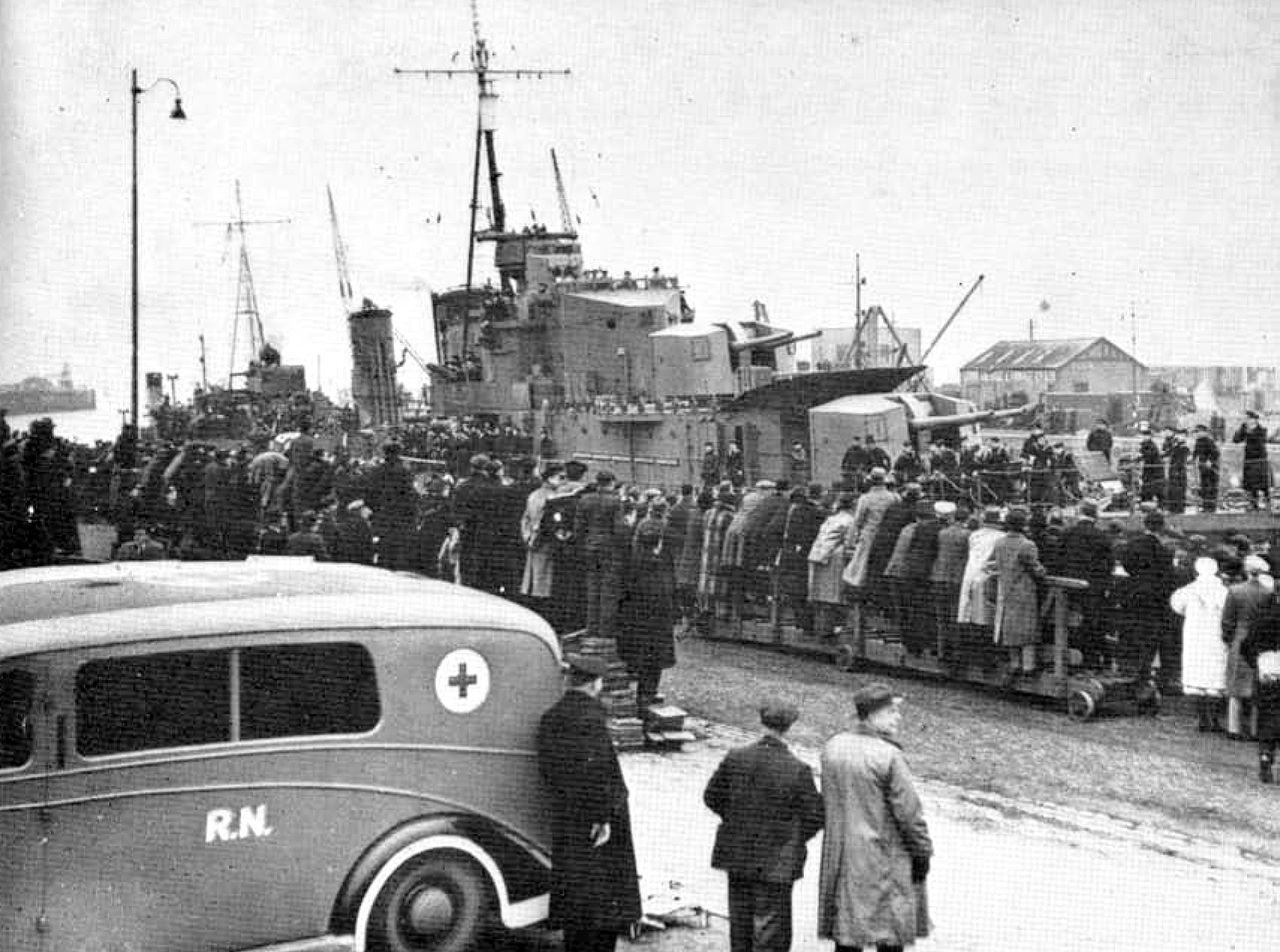
Cossack returns to Leith with the rescued prisoners
Cossack reached Leith on the afternoon of the 17th, to great jubilation from the British public, currently deep in the "phony war". The Norwegians were extremely unhappy with the British for the blatant violation of their neutrality, although their general sympathy towards the Allies meant that no action was taken beyond strong diplomatic protests. The Germans were furious, both at the British for their actions and at the Norwegians for, in their eyes, allowing it to happen, ignoring how a pair of pre-WWI torpedo boats could have stopped a modern destroyer. Altmark herself would be freed in late February and returned to Germany. In 1941, she would support Scharnhorst and Gneisenau on their sortie into the Atlantic, before becoming a blockade runner to Japan. There, in November 1942, she would blow up thanks to a spark in her fuel tanks. Longer-lasting would be the results of the sortie on Hitler's paranoia, as it convinced him that the Norwegians were in league with the Allies, contributing to his decision to invade in April.
1 Altmark’s legal status was similar to the vessels of Military Sealift Command, state-owned but not commissioned. ⇑

Comments
Torpedoes are a bit of an equaliser, though. It only takes one hit to ruin the day of even a quite major warship, as was later demonstrated at Drøbak Sound; and the close quarters of a fiord, with no room to maneuver or even get up to speed, are the best place to get that hit.
That said, the Norwegian government at the time managed, with characteristic flair, to make the worst of the situation by giving, basically, this same excuse of force majeure. Which gave everyone, most particularly Churchill and Hitler, the strong impression that Norway neither could nor would even attempt to enforce its neutrality. Halvdan Koht, unfortunately, seems to have been under the impression that enforcing one's neutrality consisted in repeating the word as often as possible, and never doing anything that might accidentally inconvenience any Great Power that happened to be violating it. If he'd managed to keep his stupid mouth-hole shut, or better still to spit wrath and defiance and promise that naval heads would roll for inaction, and that the next incursion would be resisted to the last torpedo, he might have actually managed to keep us out of the war, as he desperately wanted. Instead he basically shrugged and said "nothing we can do about it if a Great Power decides our neutrality isn't important", which was of course as good as a signed invitation to please come and violate our neutrality some more.
Later in the war, "a good Jøssing" became slang for a patriot, a supporter of the Resistance, the opposite of a collaborator.
@Andreassen
When you put it like that, it becomes a lot less mysterious why Norway got two simultaneous invasions dropped on her head.
Yes and no. Drobak Sound was a particularly exceptional case, with Blucher coming in fat, dumb and happy. Each Norwegian torpedo boat had only two tubes, and I'd give good odds that they weren't pointing the tubes at the British. Try to do that, and you're in a race with Cossack's much more experienced gun crews, who have power assistance.
Re Norwegian diplomacy more generally, I'm largely in agreement with you. It might have also helped to visible take the situation seriously, which they didn't. (Of course, this was written before I knew much about that...)
No mention of the - ok, probably mythical - deployment of Cossack's tertiary armament (cutlasses)?
Looked a bit at it, said "probably mythical" and moved on. Dealing with it well would have taken more space than I wanted to give it.
We did at least recently (OT-79) discuss the small arms carried aboard a KGV, and apparently they did carry swords, though perhaps not primarily for boarding actions.
@Rolf: so "a good Jøssing" would then be the opposite of "a good Quisling", then?
@Blackshoe I think it was initially spread by the Germans/collaborators to counter the use of 'Quisling' as an insult, but the 'Jossings' reclaimed the term, leading the Germans/collaborators to try and suppress its use.
I don't know that anyone used the second phrase, but sure, why not?
In other Qusling-related phrases: During the occupation there was "emergency money", paper backed by nothing in particular unless you count the guns of the Wehrmacht, since the gold reserves had gone over the sea to England. The 1-kroner note was referred to as the 'usling', which translates as "weakling", "nithing", "unworthy, pathetic person". The 2-kroner was the "quisling". So there were two uslings to the quisling.